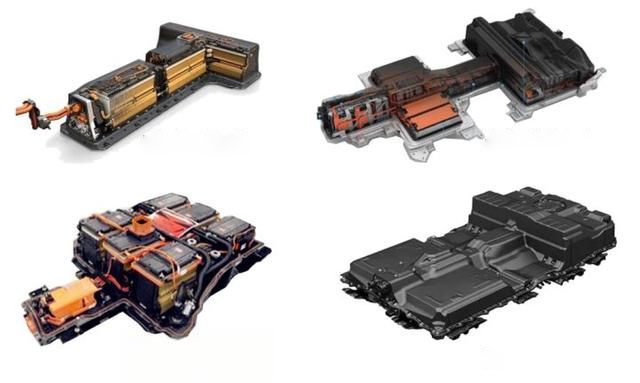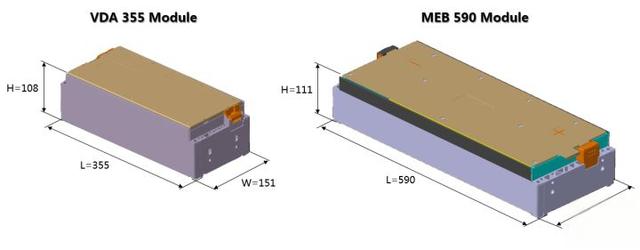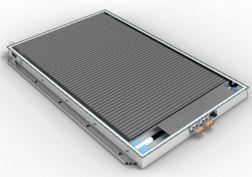 |
Welcome To Evlithium Best Store For Lithium Iron Phosphate (LiFePO4) Battery |
 |
The modern development of new energy vehicles spans just about two decades. Before this period, they were largely niche novelties. The tragic end of the EV1, the only car ever branded as "General Motors," which the company had high hopes for, serves as a poignant testament to this era.

For a long time after, traditional gasoline car giants were hesitant to invest heavily in the sector, with the industry lacking a clear leader. During this period, the standards for electric vehicles and related battery technologies were underdeveloped, inconsistent, and outdated. Pioneers of new energy vehicles had to innovate behind closed doors, resulting in a myriad of diverse battery systems, which brought about significant challenges.
Firstly, battery suppliers were exhausted from developing different battery specifications for various automakers, wasting considerable time and resources. The small market size and limited order demand only exacerbated the situation. Hopes of reducing manufacturing costs and improving product consistency through large-scale automated production were merely wishful thinking.
Secondly, automakers preferred a multi-supplier model to ensure supply chain security. However, products from different battery suppliers inevitably varied. Customizing solutions based on these differences often took 1-2 years and was unpredictable, with development costs reaching tens or even hundreds of millions. This also meant that batteries from different manufacturers couldn't be interchanged in the same vehicle model, significantly increasing development and validation costs for automakers.
Lastly, due to the lack of a comprehensive top-down strategy, there was no uniform assessment criteria or certification standards for battery systems. The industry grew wildly, with each player acting independently, casting a shadow over its future prospects. Without standardizing, regulating, and scaling up battery technology, the development of new energy vehicles was merely an academic exercise.

Around 2015, the influential German Automotive Alliance began promoting the VDA standard size for automotive batteries, developed by the German Association of the Automotive Industry (Verband Der Automobilindustrie). Almost overnight, battery companies worldwide rallied behind this standard. The VDA became the dominant standard of this era, with even China's Ministry of Industry and Information Technology referencing and expanding upon it in GB/T34013-2017.
In practical applications, the electric passenger vehicle industry adopted certain combinations from the VDA size series, resulting in popular standard modules like VDA355 and MEB590.
The VDA standard modules achieved near-universal adoption. Correspondingly, battery systems were primarily designed around these two modules. After extensive research and practical application, a modular architecture consisting of a casing, low voltage, high voltage, thermal management, and module components emerged. This greatly propelled the development of the new energy battery industry, rapidly expanding the market and significantly reducing the prices of new energy vehicles to levels comparable with gasoline cars, showcasing the power of industrial scale effects.

However, industry prosperity requires robust regulations. As the market share of new energy vehicles grew, numerous post-sale issues began to surface in the media. Some extreme cases, coupled with selective media reporting, brought the safety of new energy vehicles under intense scrutiny. In recent years, the authorities have upgraded the recommended GB/T18384 electric vehicle safety series standard (2015) to the mandatory GB18384-2020, and the GB/T31485 and GB/T31467 battery safety standards (2015) to GB38031-2020. These changes indicate an urgent need to meet higher and more comprehensive market and customer demands, marking a rapid development phase for new energy vehicles.
However, every coin has two sides. The widespread use of VDA standard modules led to a homogenization in battery systems, revolving around the same five components and configurations. This limited further integration efficiency and the development of differentiated products. How to break these shackles is a question every automaker must deeply consider.
Embodying the Olympic motto: "Faster, Higher, Stronger," humans inherently strive for continuous progress and are never satisfied. For automakers to carve a niche in the main race track of battery systems, achieving greater range (higher), faster charging speeds (faster), and enhanced safety (stronger) are indispensable.
How can one stand out amidst the flood of standardized modules? The current industry trend is "de-standardization." This doesn't mean complete autonomy but rather developing one or two standardized cells based on individual automaker needs and then integrating them into non-standardized large modules. In essence, it's a move towards high customization at the module level.
The evolution from the VDA355 module to the MEB590 module in recent years aligns with this approach, albeit conservatively. Bold reformers in this space include Tesla internationally and many others domestically.
Blade batteries represent an aggressive module-free approach, with companies like BYD and Honeycomb leading the charge. The advantage of this approach is its extremely high integration efficiency. However, its downside is poor post-sale maintainability; if one cell fails, the entire pack needs replacement. This requires exceptional cell and system-level manufacturing consistency and reliability or strict application environment constraints (limited rate, limited DOD, excellent Pack thermal management) to be viable.

Non-standard large modules, a more balanced approach, are championed by companies like CATL, SAIC Motor, and WM Motor (with more joining the ranks). This approach balances integration efficiency with post-sale maintainability. Given its feasibility in terms of cell and system-level manufacturing consistency, reliability, and application environment constraints, it's no wonder more automakers and battery companies are venturing into this arena.
Edit by editor
All Rights reserved © 2025 Evlithium Limited